COVID-19: The New Rules, By The Numbers
Published on June 26, 2020/Last edited on June 26, 2020/6 min read
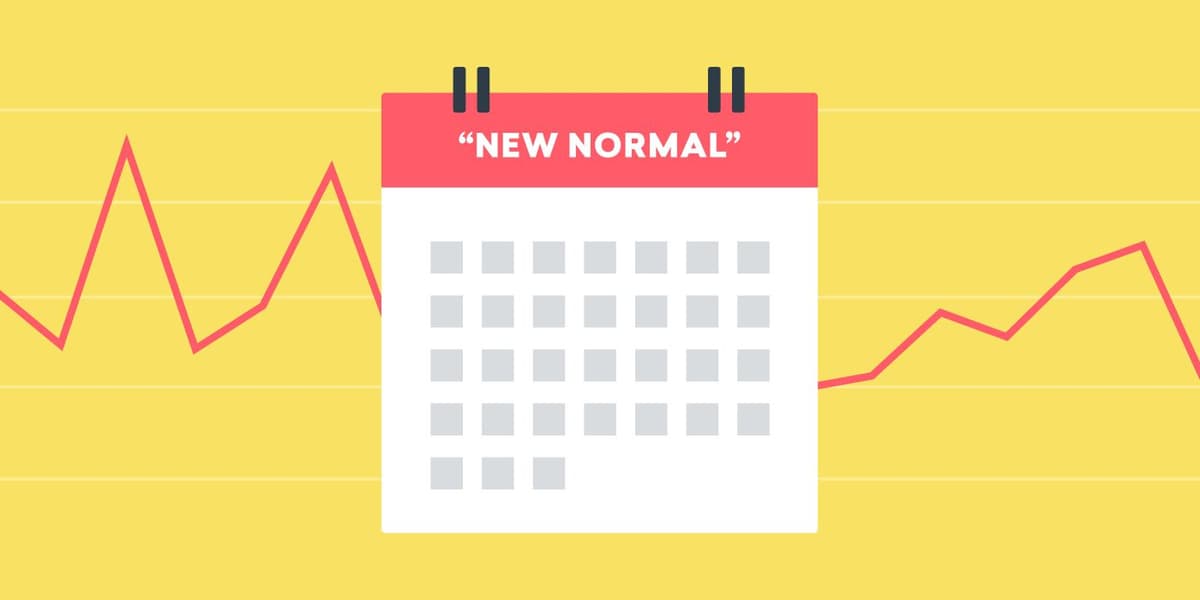

Anna Mongillo
Business Intelligence Analyst at BrazeEvery day now, there are major new developments when it comes to the global COVID-19 pandemic. We’re all dealing with a fast-changing, unprecedented situation, one where it can be difficult to know what to do in a given moment, both in terms of our individual lives and the marketing efforts so many of us are involved in.
But while certainty is in short supply right now, data can be a useful resource. Here at Braze, we’ve responded to the rise of COVID-19 by initiating an ongoing analysis focused on the pandemic and its impacts on all aspects of the business landscape. Each day, we’re digging into how customer engagement has changed—and is changing, since this is an active situation—in order to help our customers better understand the landscape they’re facing and how they can adjust their marketing strategies in a time of crisis and urgent change.
We’ve seen a number of valuable trends over the past few months, especially when it comes to changes in engagement and purchase behavior. So, to ensure that other brands can benefit from these insights, we’ve decided to share a selection of Braze-proprietary data that we believe will help illustrate how things have played out in the digital marketing landscape since the rise of COVID-19.
1. Today’s User Acquisition is a Major Retention Opportunity
Since COVID-19 first struck, one big trend has stuck out: Brands are seeing huge influxes of new users. According to our research, year-to-date user acquisition peaked during the week of March 23, with 75+% more new users coming in that week than during the first week of January. This wave of new users has leveled off a little since then, but there’s no question that the impact of COVID-10 on user acquisition was huge, especially in key verticals:
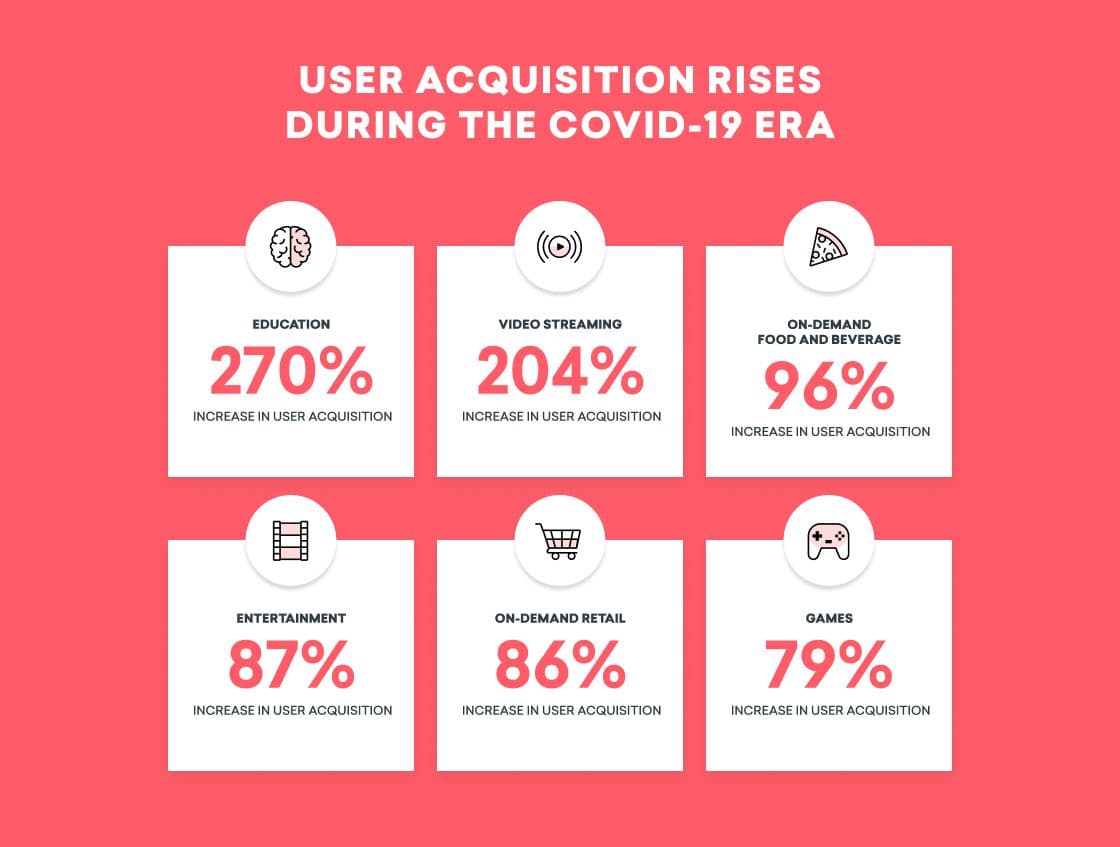
Growth in these industries is consistent with the realities of social distancing: Virtual adventures have taken precedence over physical ones, at least for the time being.
But while some verticals have seen explosive growth, this boost isn’t exclusive to those industries—in fact, total new user growth in the first three months of 2020 actually exceeded the growth seen in the last three months of 2019 by 13%. The upshot? Many brands essentially had a second, unexpected holiday season that brought in large numbers of new users. That represents a unique opportunity for brands to build their audiences in a sustainable way by focusing on retaining this influx of new users.
One key factor in retaining these acquired customers is the platform they are engaging with. While the number of new users on web and mobile were roughly split—over 53% of all users acquired in the past 60 days have been mobile users, while nearly 47% have been web users—we found that 7-day retention for new mobile users was 317% higher than for new web users. This suggests that mobile should be a key priority for brands as they plan their current retention strategy; however, it may also indicate that some brands are neglecting to focus their retention efforts on web users. With certain audiences staying home and spending more time on desktop computers, web retention is a promising area of improvement for many marketing teams.
2. Don’t Underrate the Importance of Message Timing and Personalization
Messaging plays a key role in traditional customer engagement, making it possible for marketing, growth, and engagement teams to re-engage lapsing users, drive additional revenue, and bolster customer/brand relationships. And while a lot of things have shifted since the beginning of the year, our research has found that customer messaging is still driving key engagement metrics.
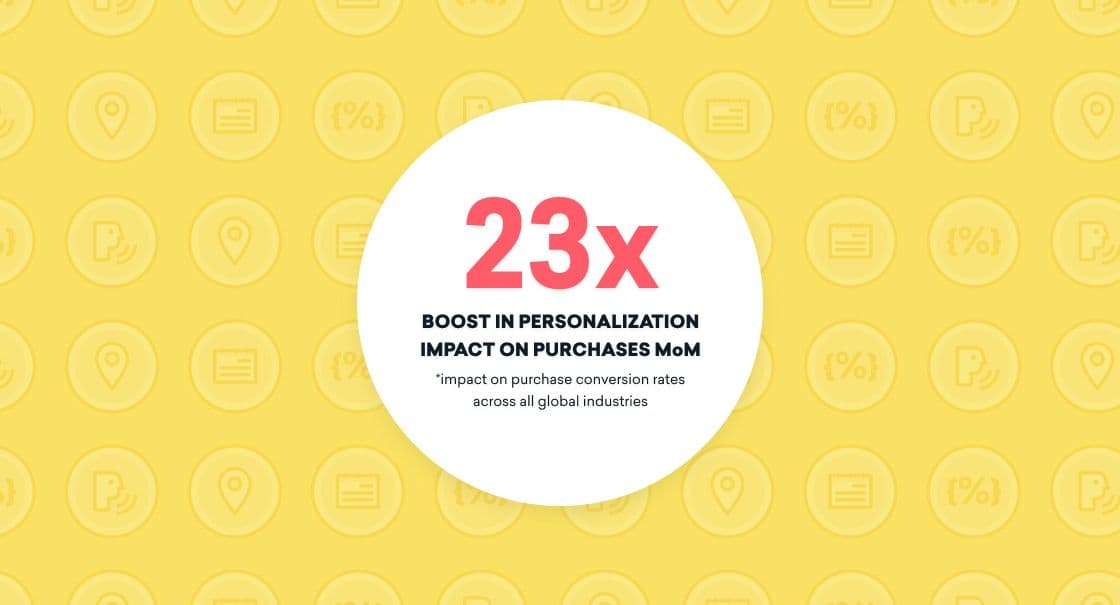
According to our findings, push notification click-to-open rates and email open rates were both up by approximately 12% for this April, compared to April 2019; that strongly suggests that the consumers are as or more interested in hearing from the brands they engage with than in the past. But while the increase is notable, our data found two specific subsets of messages that were particularly successful in engaging users. Push messages that used Braze Intelligent Timing drove 7x more app opens in June 2020 compared to June 2019, highlighting the major impact that kind of send-time optimization tool can have on user actions. Even more exciting, we found that personalized messages of all kinds drove a 23x stronger impact on purchases this April, suggesting that using message customization to provide thoughtful, valuable customer experiences may be more important in times of crisis than under normal circumstances.
3. Digital Purchasing Behavior Remains Strong Despite Major Challenges
Money talks, even in a crisis. And while marketing teams have a lot on their minds today, they’re very aware that navigating their current challenges successfully requires them to keep the lights on when it comes to revenue. Thankfully, our research found that the uptick in new users during the COVID-19 era isn’t the only positive news for brands—in fact, our data found that purchases rose nearly 10% this month over last. That’s an encouraging sign, especially when you consider that purchases during that same period last year actually dropped month over month.
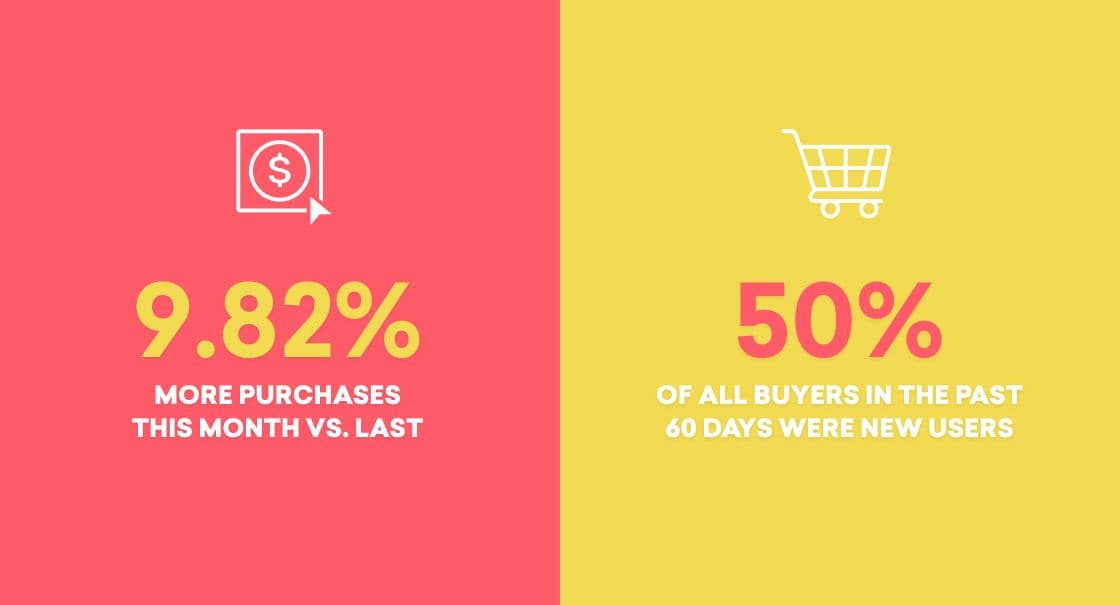
Another green shoot? We found that 50% of all purchasers in the last 60 days had been acquired in March 2020 or more recently. That suggests that many of the new users who came in the door during the height of the pandemic are sticking around and having a meaningful impact on brands’ bottom lines.
Next Steps
Now that you’re armed with this new data, you need to decide how to action on it in order to optimize your marketing efforts. So let’s go over a few key takeaways that can help you get started.
- Focus on retention: All the new users you’ve been seeing in the past few months? They won’t stay for long if you don’t keep your brand relationship strong
- Message your users—but keep it personal: Don’t blast them, and make sure you’re tailoring your communications to each customer’s unique and ever-changing behaviors and preferences
- Watch purchases and key actions: Every brand has their own expectations for what makes a quality user, so tailor your strategies to drive the KPIs you care about
Interested in digging a little deeper into messaging data? Check out our data-driven look at ideal message-send frequency.
Related Tags
Be Absolutely Engaging.™
Sign up for regular updates from Braze.
Related Content
View the Blog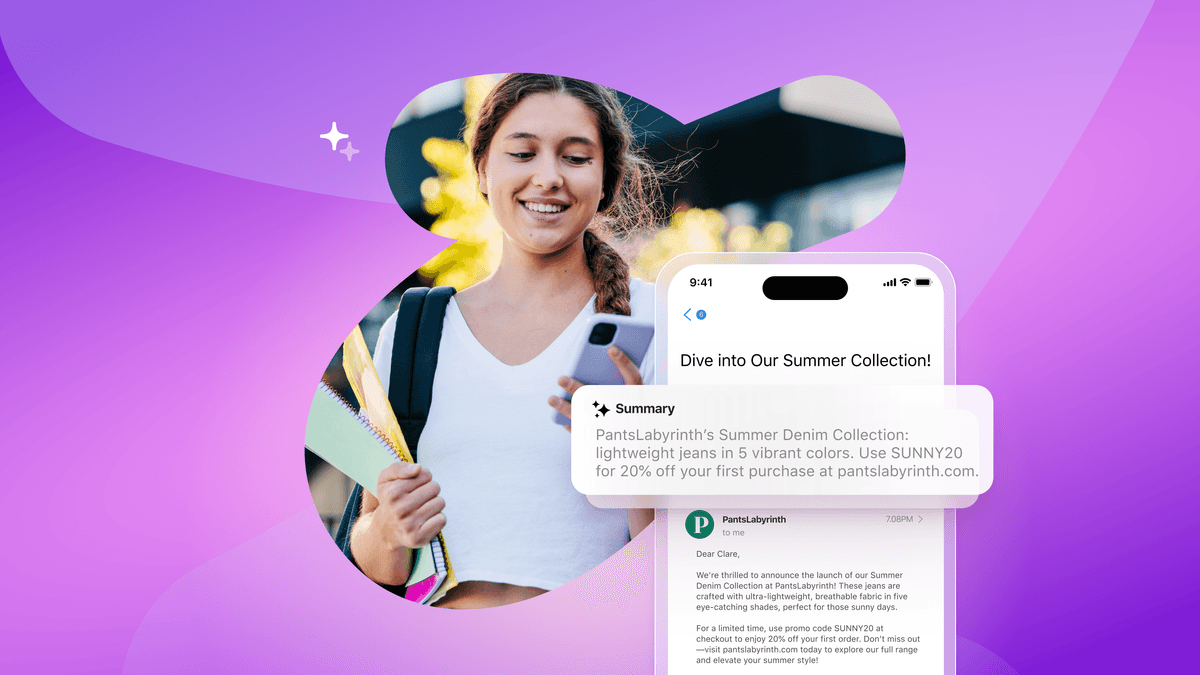
How Android 16 and iOS 26 are reshaping customer engagement

Haley Trost

Proven customer retention strategies for building loyalty and reducing churn
July 02, 2025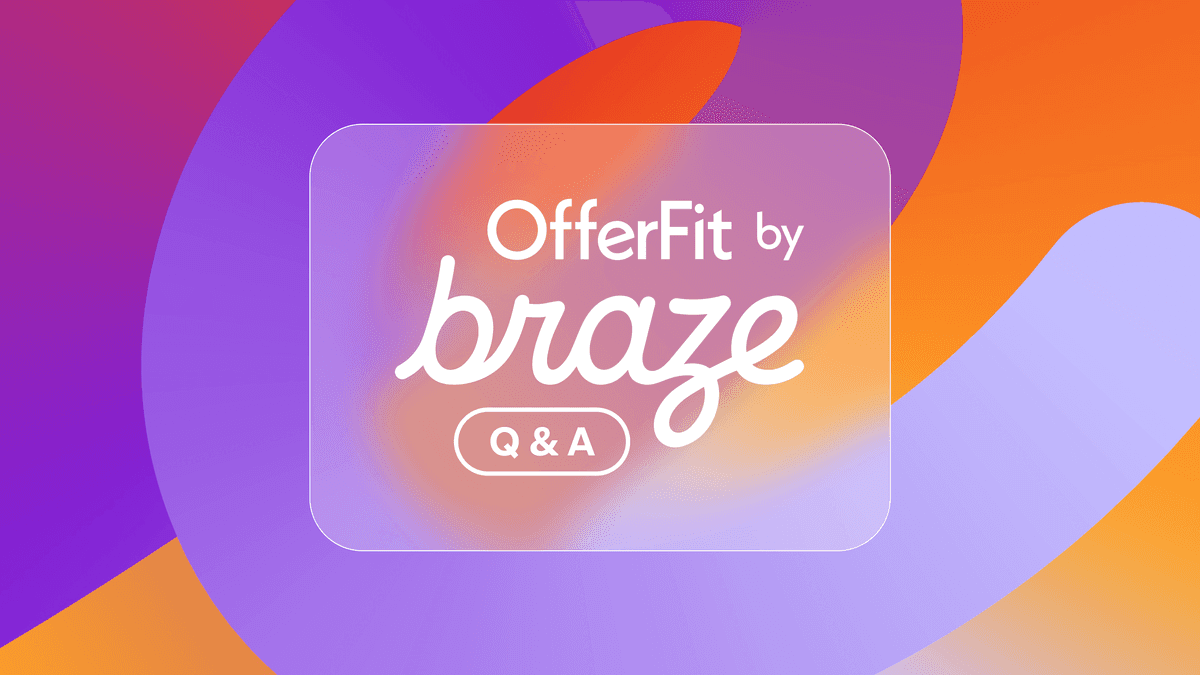
Introducing OfferFit by Braze: Answering burning questions
